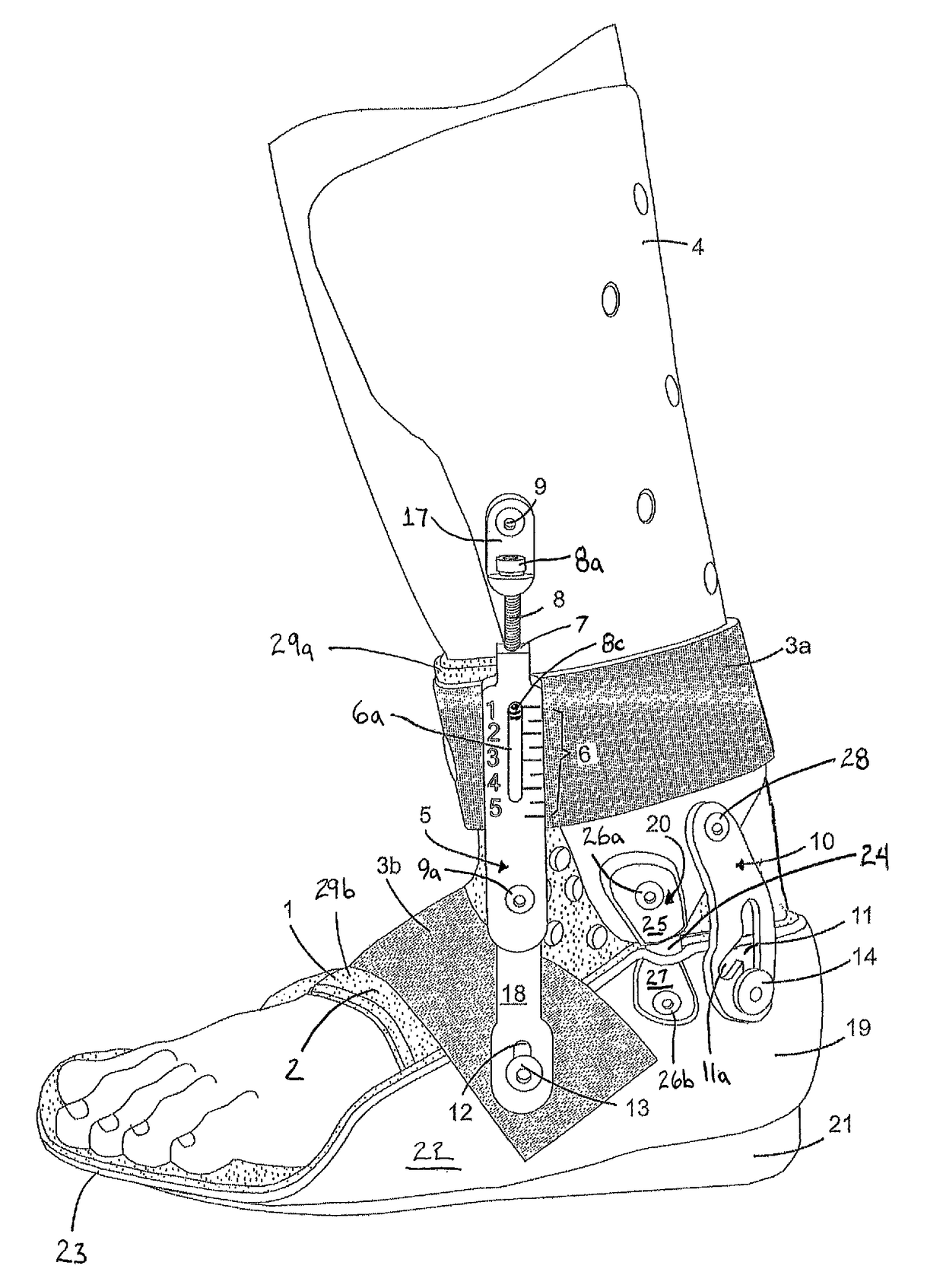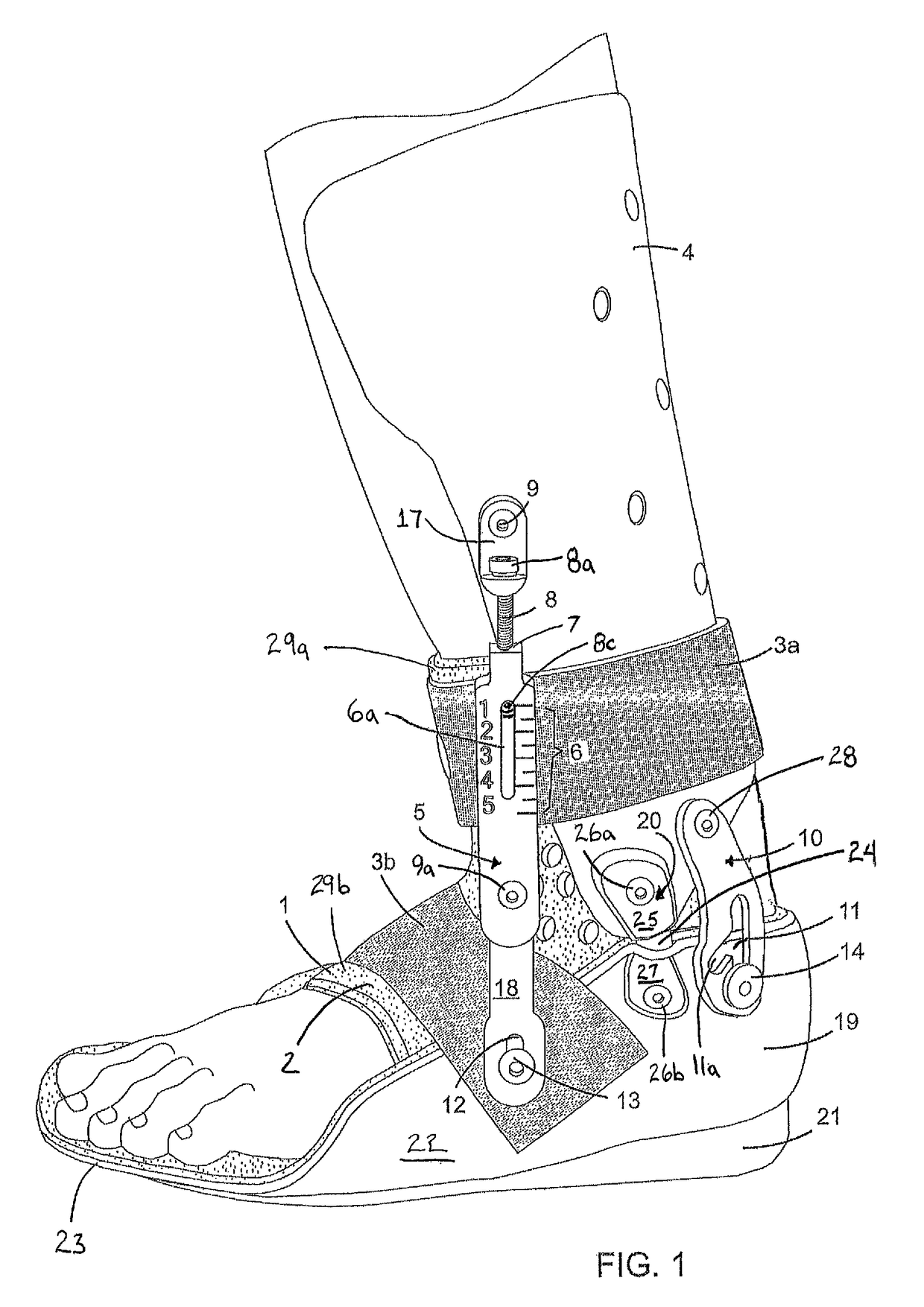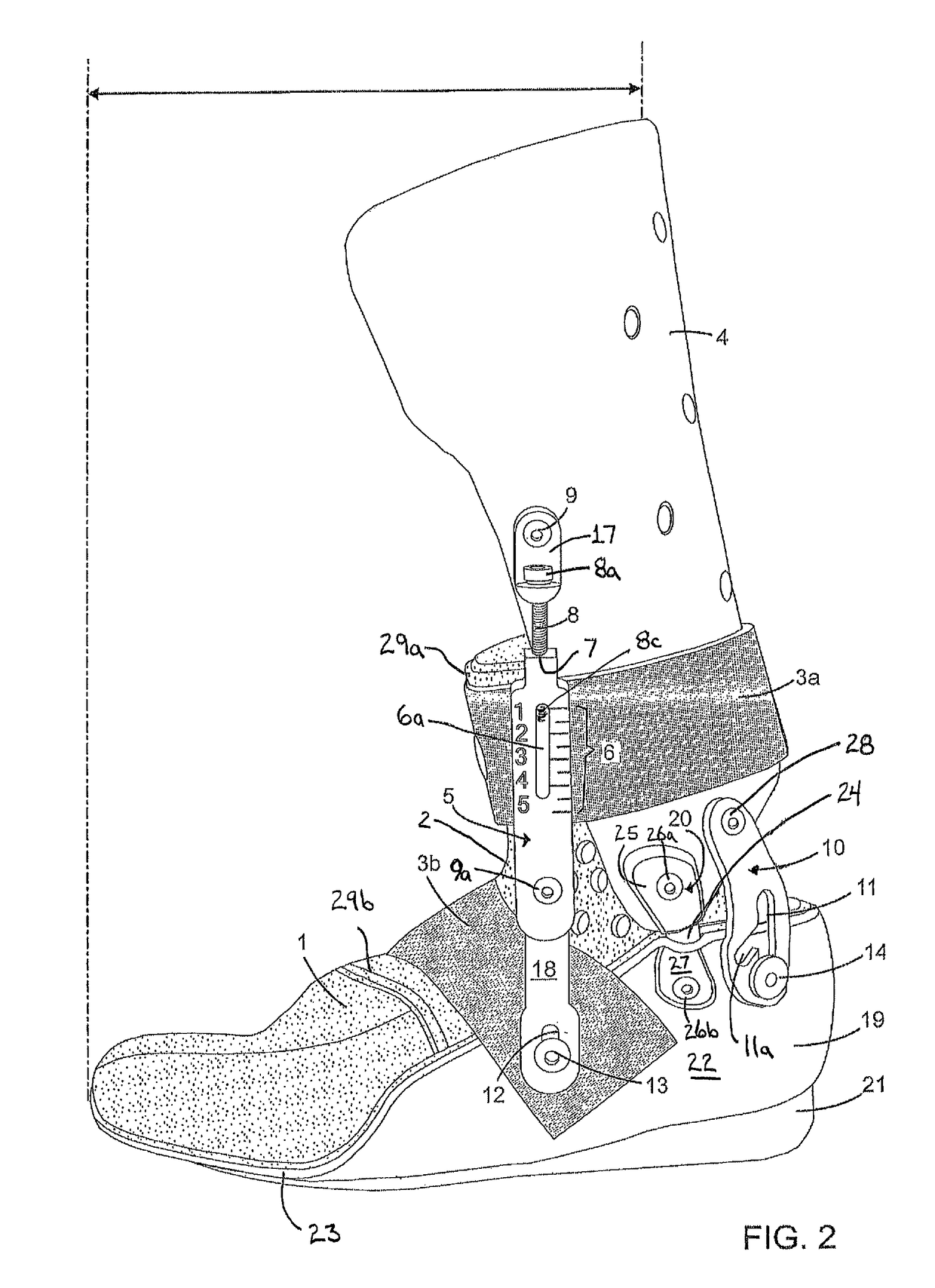Rooster boot ankle foot orthosis
a technology for ankles and boots, applied in the field of ankle foot orthosis, can solve the problems of generalized confronted with muscle imbalance, imbalance of muscle pulls, and misalignment of involved joints, and achieve the effects of preventing spastic contracture shortening of heel cord, preventing sprain of heel cord, and optimum security and stability
- Summary
- Abstract
- Description
- Claims
- Application Information
AI Technical Summary
Benefits of technology
Problems solved by technology
Method used
Image
Examples
Embodiment Construction
[0023]The present invention will now be described with reference to the accompanying figures, wherein the numbered elements in the following written description correspond to like-numbered elements in the figures. In the embodiment shown in FIGS. 1-4, the orthosis includes a molded inner boot or inner boot assembly 1, an upper or posterior shell 4, and a lower or foot shell 19, with shell 4 and shell 19 being rigidly formed of molded plastic and a sole 21 affixed to the bottom of foot shell 19. Also included are a static strap 3b and a stretchable elastic strap 3a used to secure a patient's foot and ankle within the orthosis, such as by hook and loop fastener connections to shell 19 and shell 4, respectively, in the illustrated embodiment. As shown in FIGS. 1-4 and 8, posterior shell 4 has a generally semi-cylindrical shape that conforms to the posterior lower calf and upper ankle region of a patient, with foot shell 19 including a wall portion 22 defining a heel receiving cavity an...
PUM
 Login to View More
Login to View More Abstract
Description
Claims
Application Information
 Login to View More
Login to View More - R&D
- Intellectual Property
- Life Sciences
- Materials
- Tech Scout
- Unparalleled Data Quality
- Higher Quality Content
- 60% Fewer Hallucinations
Browse by: Latest US Patents, China's latest patents, Technical Efficacy Thesaurus, Application Domain, Technology Topic, Popular Technical Reports.
© 2025 PatSnap. All rights reserved.Legal|Privacy policy|Modern Slavery Act Transparency Statement|Sitemap|About US| Contact US: help@patsnap.com



